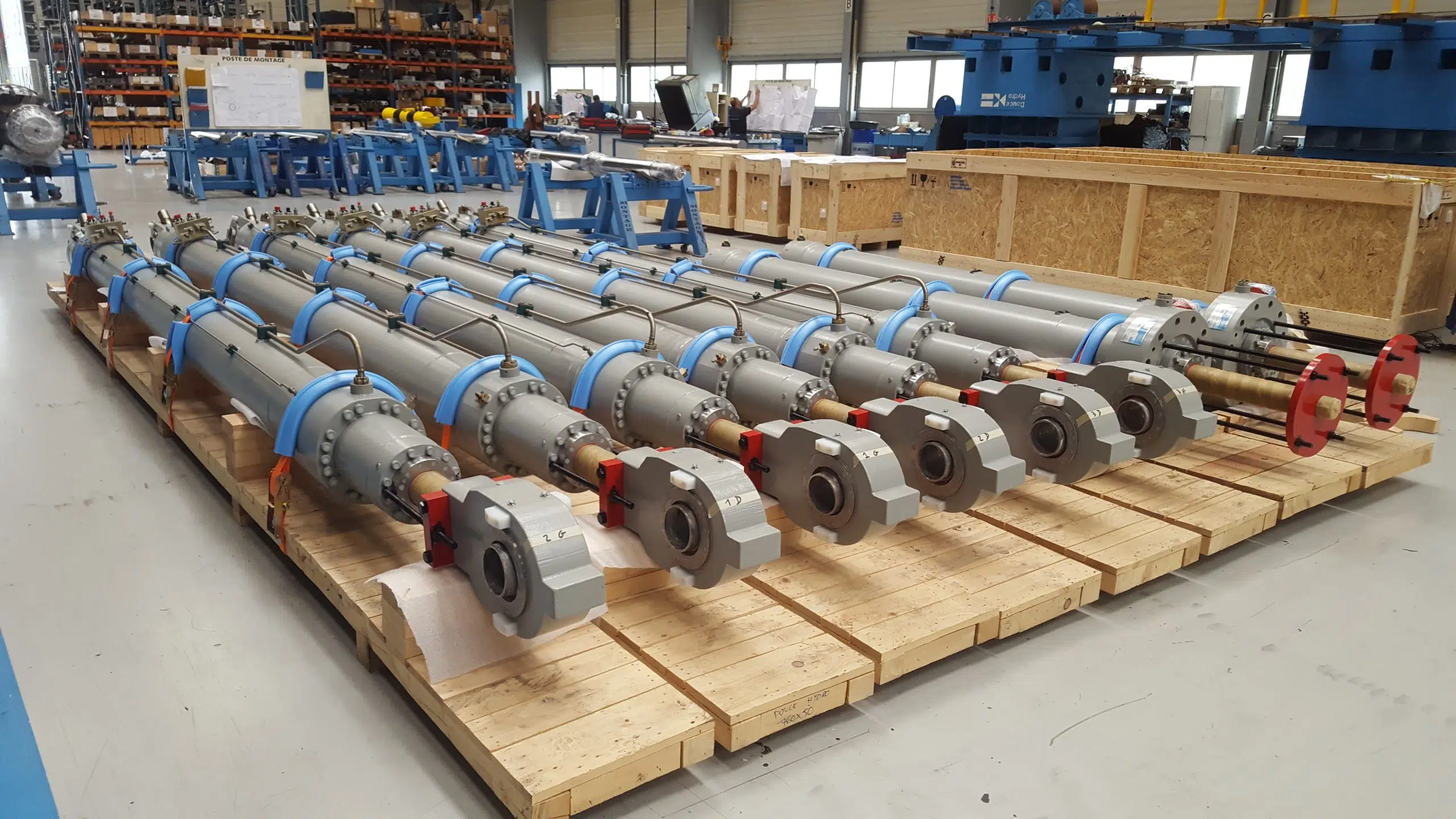The double-acting hydraulic cylinder is an industrial component capable of converting hydraulic energy into mechanical motion.
Unlike a single-acting cylinder, designed to provide movement in a single direction, the double-acting cylinder works in two directions.
This property makes them central to a wide range of mobile equipment.
Douce-Hydro specializes in the design and manufacture of hydraulic systems, and can supply double-acting cylinders perfectly adapted to your needs.
What is a double-acting hydraulic cylinder?
A double-acting hydraulic cylinder is a mechanical device powered by hydraulic fluid.
This product is configured to move in two directions, hence the term “double-acting”.
This refers to the cylinder’s ability to produce movement in both directions.
The heart of the double-acting hydraulic cylinder comprises a cylinder, piston, rod and hydraulic fluid.
The piston divides the cylinder into two separate chambers, each filled with pressurized oil.
When hydraulic pressure is applied to one of the chambers, the piston moves in one direction, causing the rod to extend in the opposite direction.
When pressure is applied to the other chamber, the movement reverses, causing the rod to retract.
In this way, the action of the double-acting hydraulic cylinder enables precise control of movement: a quality that makes it particularly well-suited to a variety of industrial applications.
The hydraulic cylinder rod plays a key role in this “double-acting” mechanism.
It is usually attached to the piston and extends through one end of the cylinder.
Rod diameter and stroke directly influence cylinder performance: a larger rod diameter potentially increases the cylinder’s load capacity.
The stroke defines the total distance the rod can travel.
Which hydraulic cylinder for which need?
Choosing the right double-acting hydraulic cylinder depends on a number of factors: the load to be moved, the travel distance and the frequency of use.
Rod diameter is another important criterion to consider when selecting a cylinder: a larger diameter generally supports heavier loads, but it can also affect the speed of movement.
Hydraulic pressure level is another parameter to consider.
It determines the magnitude of the force exerted by the “double-acting” cylinder.
Higher pressure allows you to handle greater loads: however, it is essential to comply with system specifications to avoid damage.
The stroke of the cylinder, i.e. the maximum distance the rod can travel, must also be taken into account.
It’s vital to choose a stroke that’s suited to the specific use for which the “double-acting” hydraulic cylinder is intended.
An inappropriate choice can lead to performance or safety problems.
Thanks to its design office and hydraulic engineering experts, Douce-Hydro can determine with extreme precision which type of “double-acting” hydraulic cylinder is best suited to your needs.
Characteristics and importance of double-acting hydraulic cylinders
The characteristics of the double-acting hydraulic cylinder multiply its industrial applications.
Its ability to produce movement in two directions explains its versatility.
Double-acting hydraulic cylinders can be adapted to a variety of needs: they can be used to lift heavy loads, move heavy objects or exert a controlled force.
In the machine tool sector, double-acting hydraulic cylinders are used to provide a multiplicity of movements, such as the forward and backward movement of cutting tool blades.
They automate manufacturing processes and improve operational efficiency.
Construction equipment such as hydraulic excavators, bulldozers and cranes frequently use double-acting hydraulic cylinders to perform precise movements: arm lifting, boom rotation and bucket tilting.
Hydraulic presses are equipped with “double-acting” hydraulic cylinders to exert a controlled force when forming, punching or compressing materials.
In the construction and public works sectors, some heavy-duty vehicles such as site trucks and lifting vehicles incorporate double-acting hydraulic cylinders to facilitate precise, powerful movements when lifting a bucket or deploying a telescopic arm.
Double-acting” hydraulic cylinders are, of course, widely used in industrial companies.
